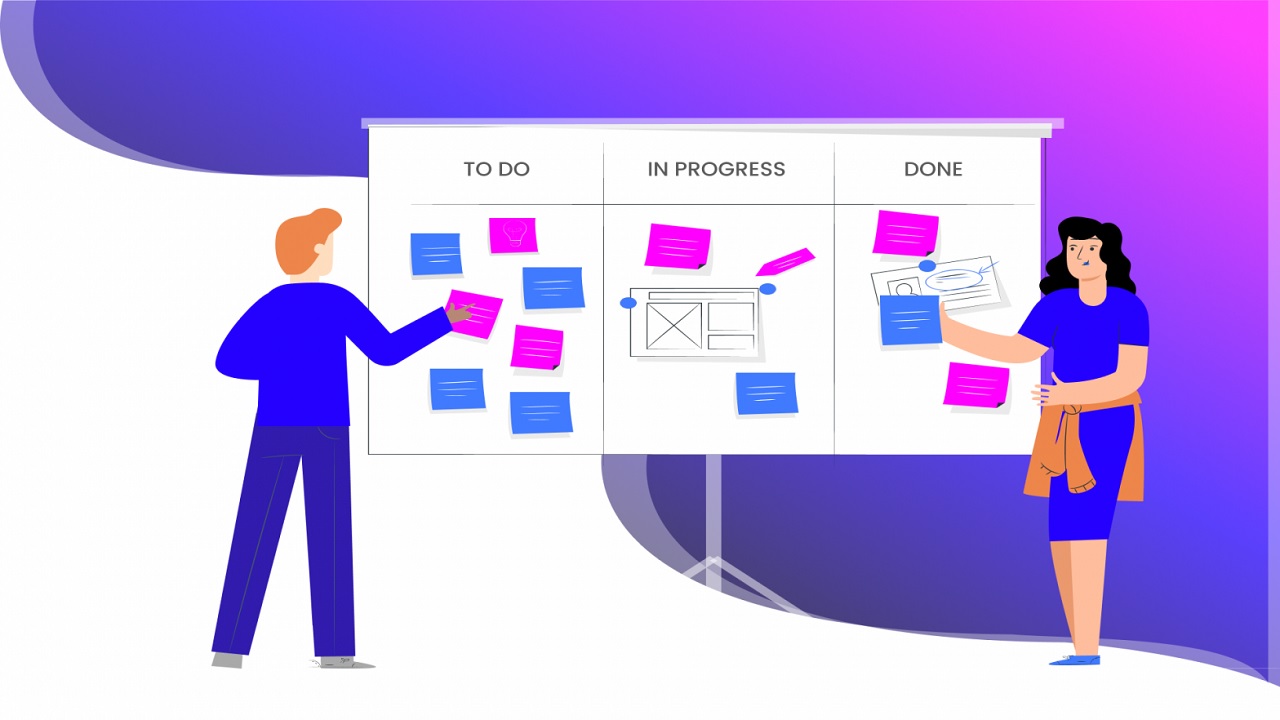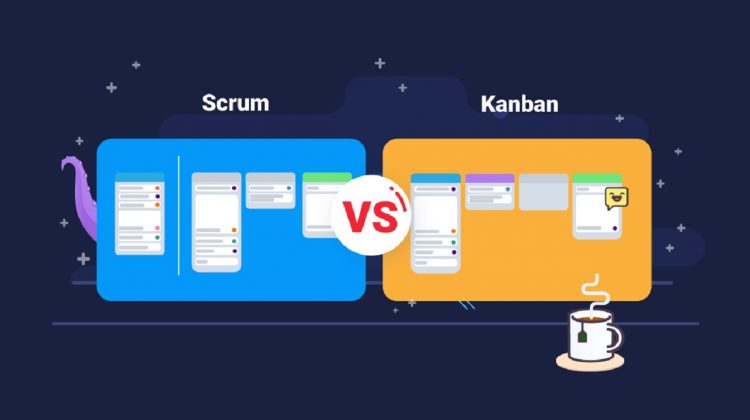In the world of software development, project management has become an essential element for success. Two popular methods, in particular, stand out: Scrum and Kanban.
Kanban vs Scrum is an age-old debate in the world of project management. Both Kanban and Scrum are frameworks that help teams plan, manage and track their work. But which method should you use to get the best results for your team? It all depends on what kind of project you’re working on and how you want to measure progress.
Kanban is a visual system used by developers to identify tasks, prioritize them, and keep track of the progress made on each one. It uses cards placed on a wall or board with specific titles, statuses, and deadlines indicated for each task. The main benefit of this system is that it allows managers to easily visualize where they are in the process, as well as any bottlenecks or slowdowns they may encounter along the way.
What Is Kanban?

Kanban is an innovative workflow management system that can help teams to optimize their processes and increase productivity. It was originally developed by Toyota in the 1940s but has since been adopted by many businesses around the world. Kanban provides a visual framework for organizing tasks and tracking progress as they move through each stage of the workflow.
The main concept of Kanban is to limit work-in-progress at each stage of the process, allowing teams to focus on completing individual tasks more efficiently. A typical Kanban board consists of three columns: To-Do, Doing, and Done. Each column contains cards that represent individual tasks or projects that are assigned for completion at different stages in the workflow. The cards can be color-coded or labeled with labels such as ‘High Priority’ or ‘Urgent’.
Advantages of Kanban
Kanban is a popular project management system that helps organizations manage their workflow. Kanban offers many advantages to businesses, including increased efficiency, improved communication, and greater flexibility.
The primary advantage of Kanban is its ability to improve the efficiency of teams by providing visibility into their workflow. By creating a visual overview of tasks, team members can easily see which tasks have been completed and which are still pending. This allows them to better prioritize their work and avoid any potential bottlenecks in the process.
Additionally, each task can be given an estimated time frame for completion so everyone has a clear understanding of what needs to be done and when.
Kanban also helps with communication within teams by providing clear guidelines for how tasks should be assigned and executed.
Disadvantages of Kanban
Kanban is a system used by many project managers and teams to help them stay organized and efficient. However, it also has its drawbacks that can be difficult to manage. Here are some of the disadvantages of using Kanban:
The first disadvantage is that Kanban requires a lot of organization to keep track of the various tasks associated with each project. This can sometimes be overwhelming for teams who don’t have much experience in this type of task management system.
Additionally, due to its visual layout, it’s often impossible to show the full scope of a project or how tasks are related which makes it difficult for team members to stay on top of their workloads.
A second issue with Kanban is that it relies heavily on communication between team members in order for it to be effective.
What Is Scrum?

Scrum is an agile methodology of project management that enables teams to self-organize and make changes quickly, in accordance with the changing demands of the project. It is based on a set of values, principles, and practices that focus on collaboration between team members in order to develop and deliver products quickly and effectively.
The Scrum framework consists of three roles: the Product Owner, the Scrum Master, and the Development Team. The Product Owner is responsible for maximizing the value of a product by managing its features and prioritizing them according to their importance.
The Scrum Master acts as a facilitator for the team; ensuring that all members are working together in alignment with agreed-upon objectives. Finally, the Development Team consists of individuals who design, develop, test and deploy products within given timeframes. Together, these three roles collaborate to produce successful outcomes efficiently without sacrificing quality standards.
Advantages of Scrum
Scrum is a popular Agile methodology used in software development and project management. It provides a framework for teams to organize their work into manageable segments, break down tasks into achievable steps, and quickly adapt to changing conditions.
The advantages of Scrum include improved transparency, increased productivity, clearer roles and responsibilities, better control over the project timeline and budget, higher quality products or services delivered on time, improved team morale, increased customer satisfaction ratings, and reduced costs.
Organizations that adopt Scrum benefit from enhanced communication between team members as well as external stakeholders such as customers. By limiting the amount of work that can be taken on at once within each sprint cycle, teams can focus on prioritizing important tasks over those with lower priority levels. This helps ensure that resources are allocated more efficiently and effectively towards critical activities.
Disadvantages of Scrum
Scrum is a popular project management methodology that has been used by many successful companies around the world. However, like any other project management method, there are certain disadvantages to using Scrum. These include difficulty in adapting to change and lack of scalability.
Firstly, one of the major issues with Scrum is its inflexibility when it comes to dealing with unexpected changes during a project. As teams work within set timeframes and have specific goals to achieve, adjusting plans or activities can be difficult as this may disrupt progress and throw off the timeline for the entire project.
Additionally, not all stakeholders may be comfortable or familiar with Agile transformation methods such as Scrum which can cause resistance to make necessary changes during development.
Comparing Kanban vs Scrum
Kanban and Scrum are two of the most popular project management methods used by organizations today. While their goal is the same – to maximize productivity and efficiency, they both have their own distinct advantages and disadvantages that make them stand out from one another.
Kanban is a visual system that emphasizes continuous flow and limits work-in-progress (WIP). It is typically implemented as a system of cards on a board, representing tasks at various stages of completion. It does not impose timelines or deadlines for tasks, making it ideal for teams who prefer to work at their own pace.
Kanban also encourages collaboration among team members by ensuring there are no bottlenecks or roadblocks that prevent progress from happening quickly.
Scrum on the other hand focuses on rapid iterations with short sprints that typically last between two to four weeks.
Read Also: How To Choose The Best Free Project Management Software
Conclusion: Kanban vs Scrum Which Is Right For You?
In conclusion, it is clear that both Kanban and Scrum are useful project management tools. Each has its own advantages as well as drawbacks, so it is important to consider the particular needs of a project before deciding which one to use.
Both frameworks provide valuable guidance on how to break down projects into manageable tasks and track progress toward completion. By understanding their differences and similarities, teams can choose the approach that best suits their needs.






























